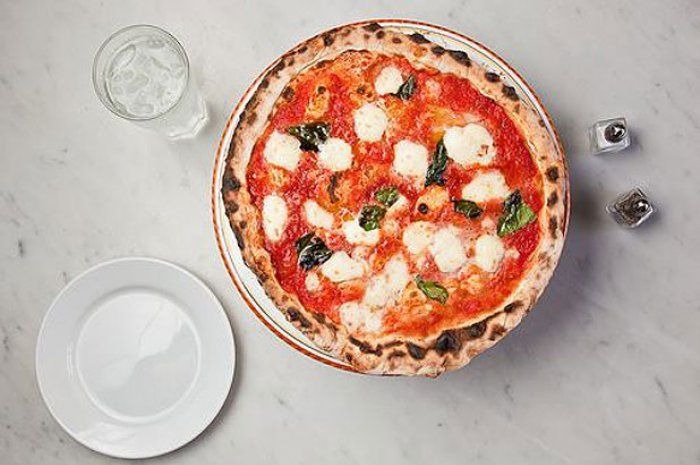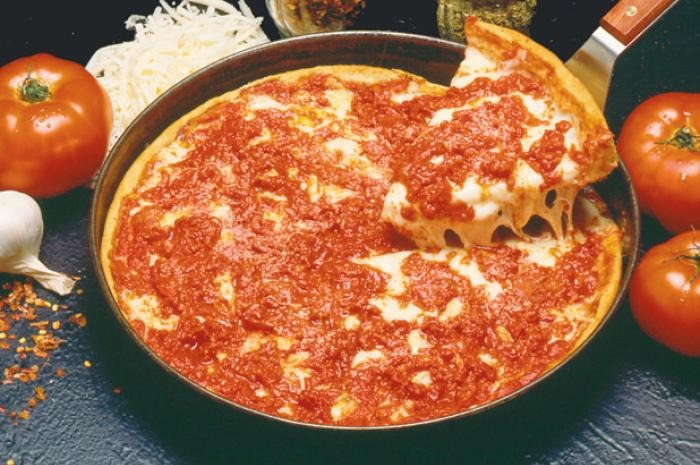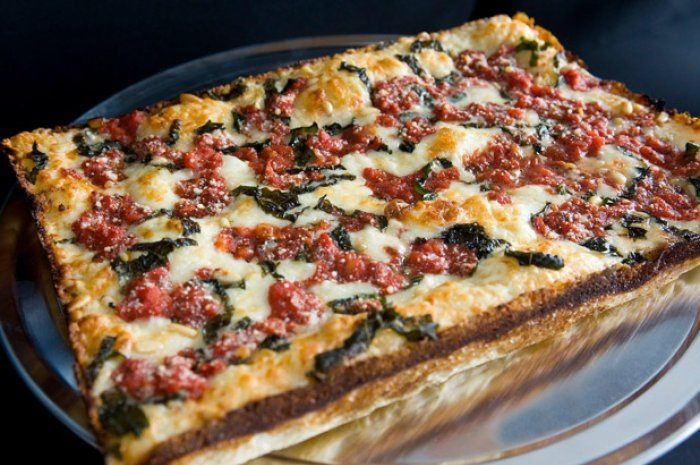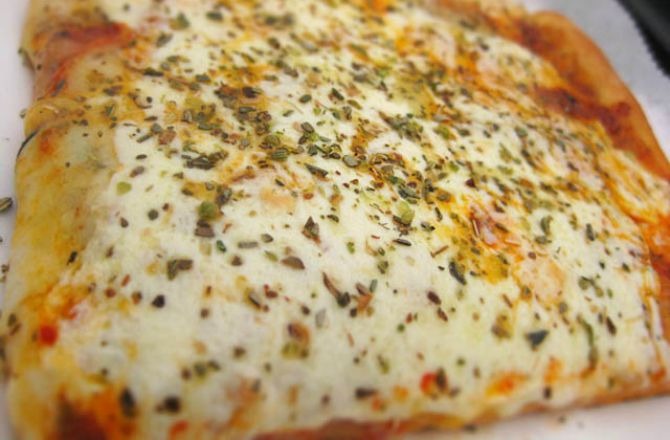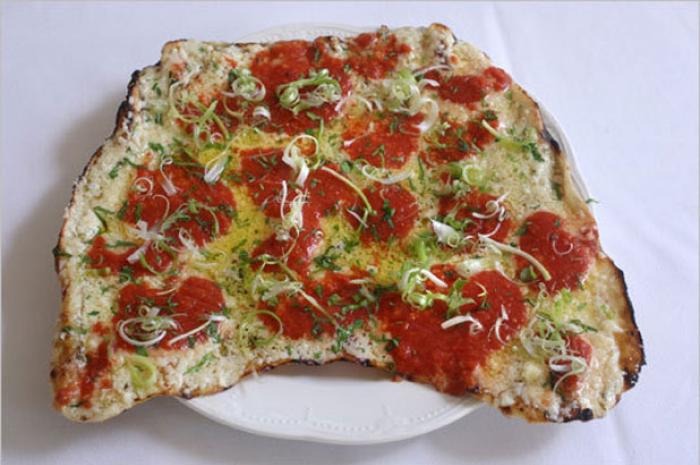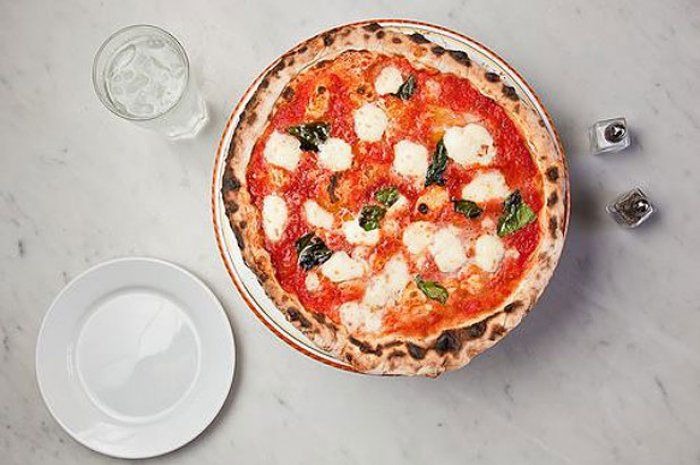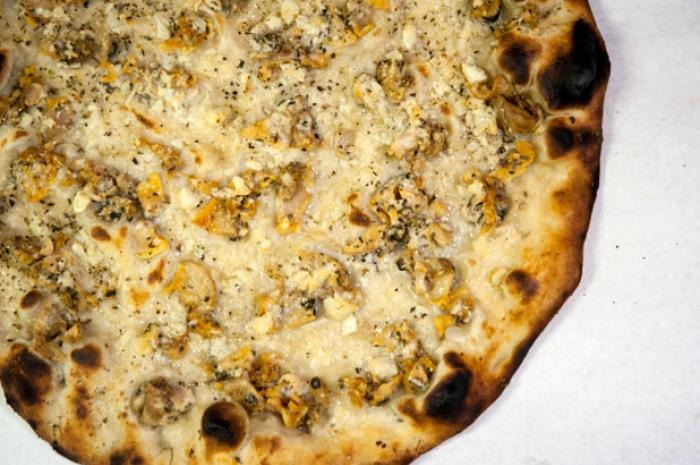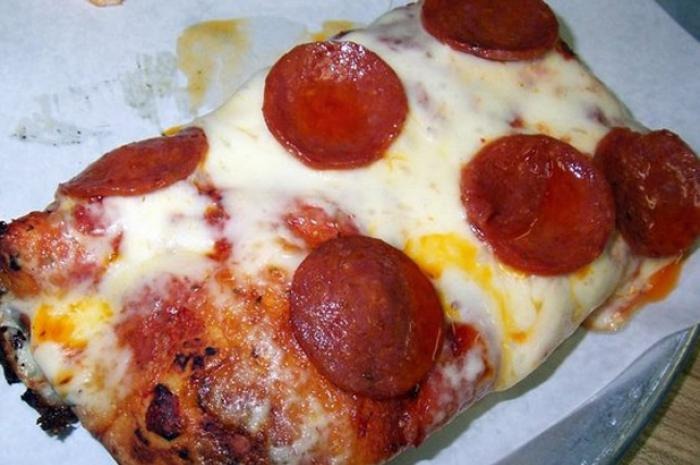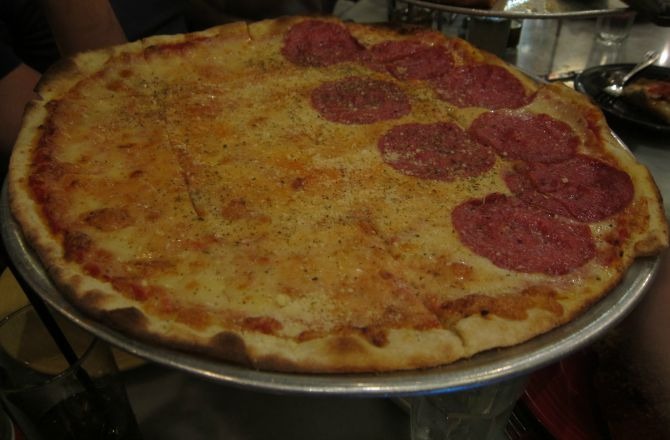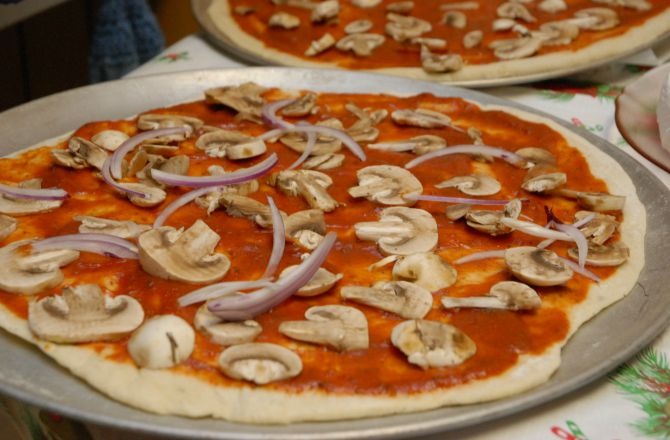11 Pizza Styles You Need To Know About
Travel this great big country, and you'll discover that just about every popular food has its own variations that are specific to particular regions and cities. And that's particularly true for pizza. Great and unique pizza can be found from coast to coast, and we've encountered 11 distinct styles that you definitely need to know about if you want to call yourself a pizza connoisseur.
Bar Pie
This Northeastern specialty is just what its name implies: a pie that's typically served at a bar. True bar pies are thin-crusted but not crackery, covered with a layer of moon crater-speckled cheese from edge to edge, and small enough to be eaten by one person over the course of, say, two beers. You'll find wonderful examples at Eddie's in New Hyde Park, New York; Denino's in Staten Island; Star Tavern in Orange, New Jersey; and Colony in Stamford, Connecticut.
Chicago Deep Dish
Some may argue that a deep-dish Chicago pizza is actually more of a casserole, but for all intents and purposes it is a real pizza — and a great one, at that. Unlike any other pizza you'll ever see, deep-dish Chicago pizzas start with a buttery dough that's pressed into the bottom and around the sides of a deep (usually cast iron) dish, covered in cheese, then topped with lots of sauce and toppings. You'll find this style all across the country thanks to Chicago-based Uno Chicago Grill, but for the true deep-dish experience we suggest you visit the original location of Lou Malnati's, in Chicago.
Detroit
Detroit's signature square pizza style is like a Sicilian slice on steroids. There's some crisp, thick, deep-dish crust action going on here — thanks to the process of twice-baking the pizza in square pans that have been brushed with oil or butter — and a liberal ladling of sauce spread out across the top of the cheese surface. You'll find the definitive version at Buddy's in Detroit (they invented it, after all), but the gospel has been spreading, so you can eat a stellar version as far afield as Via 313 in Austin.
Grandma
Another delicious but often overlooked pizza style indigenous to the Northeast, grandma-style pizza starts with dough that's been stretched in a pan and dosed with olive oil. The dough has a short proofing time, so the crust stays thin, and you'll usually find it topped with fresh mozzarella instead of the processed stuff and sliced into squares. Looking for a definitive version? Check out Williamsburg Pizza in Brooklyn.
Grilled
It's harder than it looks to grill a pizza, but plenty of people are attempting it these days. The grill needs to be hot, the pizza needs to cook fast, and the dough needs to have a high gluten content to keep its structure on the grill. The dough is cooked on both sides before toppings are added, and the end result is usually oblong and small enough for one person. If you're looking for the country's best, make the pilgrimage to its birthplace: Al Forno in Providence, Rhode Island.
Neapolitan
Neapolitan pizza is represented more than any other style on our ranking, and that's because it's not only the most original and authentic style of pizza, tracing its roots back to Naples, as the name implies, it's also the most challenging to perfect — and the most rewarding when you do. Classic Neapolitan pizzas are small; the crust is chewy, just a little charred, and slightly tangy from fermentation; the cheese is mozzarella di bufala; the sauce is made with San Marzano tomatoes; the oven is extremely hot; and the center takes on a "soupy" quality that mandates using a knife and fork. You can find definitive versions at Roberta's in Brooklyn, Una Pizza Napoletana in San Francisco, Motorino in New York City, and Punch in St. Paul, Minnesota.
New Haven
Even if you live in New York City, you haven't really experienced pizza until you've tried New Haven-style "apizza." These huge pies have a thin, oblong crust, are slightly charred, and are a bit chewier, drier, and thicker than their New York cousins. They're generally cooked in coal-fired ovens, and are sold whole as opposed to by the slice. Cheese isn't a given; it's considered a topping, so if you order a "plain," expect your pie to only be topped with tomato sauce, oregano, and a little grated pecorino. If you find yourself in the New Haven area, make sure you stop into Modern Apizza, Sally's, or our No. 1 pizza for several years running, Frank Pepe.
New York
New York is the classic pizza destination, and you'd be hard-pressed to find a truly mediocre slice there, even at the now-ubiquitous dollar slice joints. The New York pie is big, cut into eight slices, completely covered with sauce and cheese, and has a crust sturdy enough that it doesn't sag when held straight out. If you're looking for a classic New York pizza experience, we suggest you start with the classics: old-school sit-down places like Lombardi's, Patsy's, Grimaldi's, John's, and Totonno's that were at the vanguard of the pizza revolution in the early days of the twentieth century and don't sell by the slice. But don't miss their progeny: the slice joint. Check out Louie & Ernie's in the Bronx, Joe's in Manhattan, and the best one of all, Di Fara in Brooklyn.
Sicilian
Popular in the Northeast and available at just about every New York slice joint, Sicilian pizza couldn't be more different from a traditional New York pie. The dough is pressed into a rectangular sheet pan just like grandma pie, but this dough is allowed to proof for much longer, and the pillowy end result closely resembles a focaccia. That's before the toppings, though: Most Sicilian pies are thick and heavy, slightly crunchy on the bottom, and covered with a mess of cheese, sauce, and toppings. You'd have a hard time finding a better Sicilian slice than what's sold at Sal's in Mamaroneck, New York, but the versions at Galleria Umberto in Boston and Prince Street Pizza in Manhattan are also just about perfect.
St. Louis
St. Louis has a pizza style all its own that's largely unknown outside of the city. St. Louis pies are cracker-thin but slightly sweeter than bar pies, and they're topped with a mythical type of processed cheese called Provel: a combination of Cheddar, Swiss, and provolone that's native to St. Louis. If you want to give it a shot, we suggest you track down the nearest outpost of Imo's, which has more than 90 locations in the city.
Wisconsin
In Milwaukee, the pizzas are thin-crusted, topped with an ungodly amount of cheese and toppings, and undeniably delicious. Each pizzeria serves its own variation, but if you're looking for a perfect specimen, don't miss Milwaukee's Zaffiro's, which has been dishing them out since 1954 — or at one of Wisconsin-born chef Michael White's Nicoletta restaurants, in New York City and Bernardsville, New Jersey.
